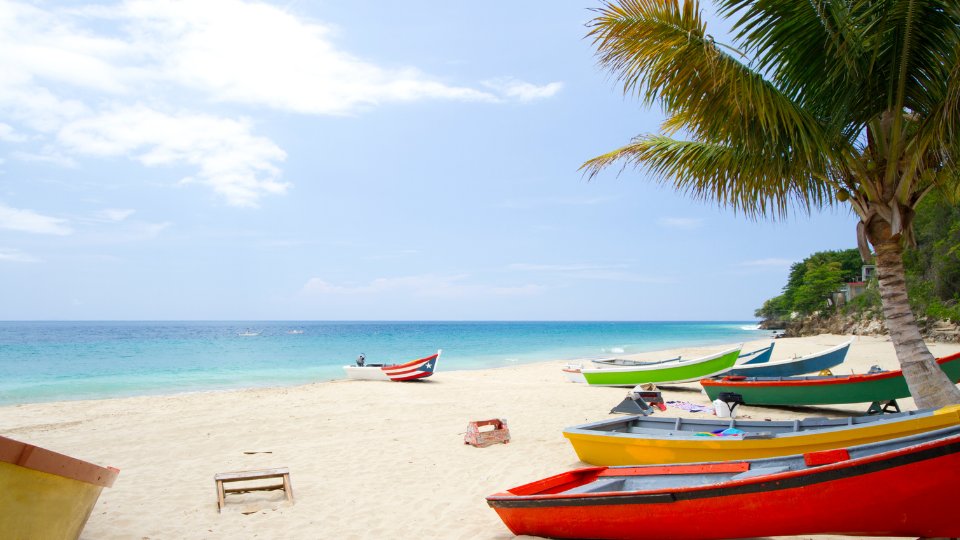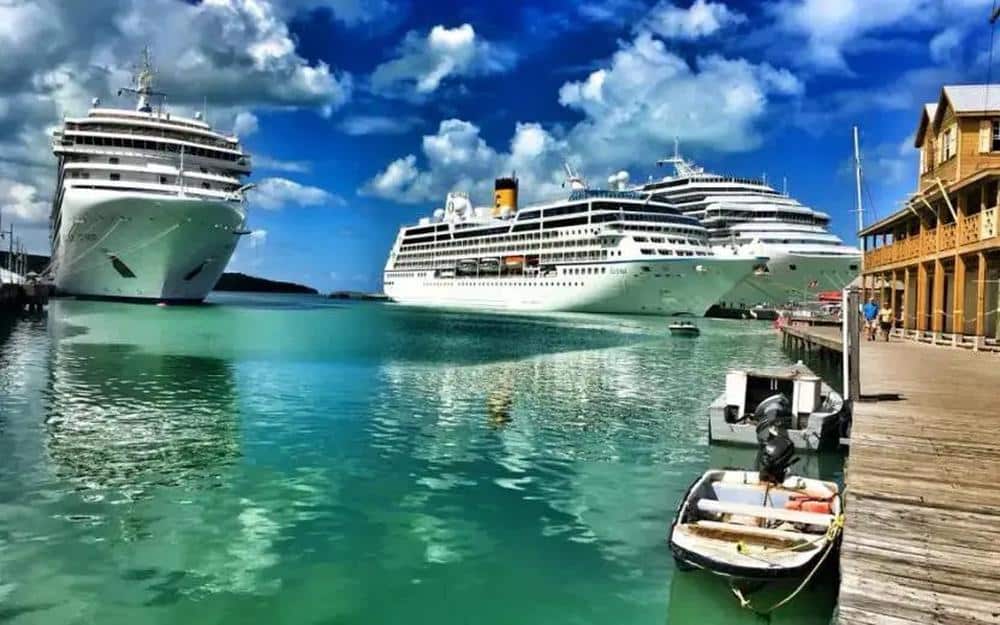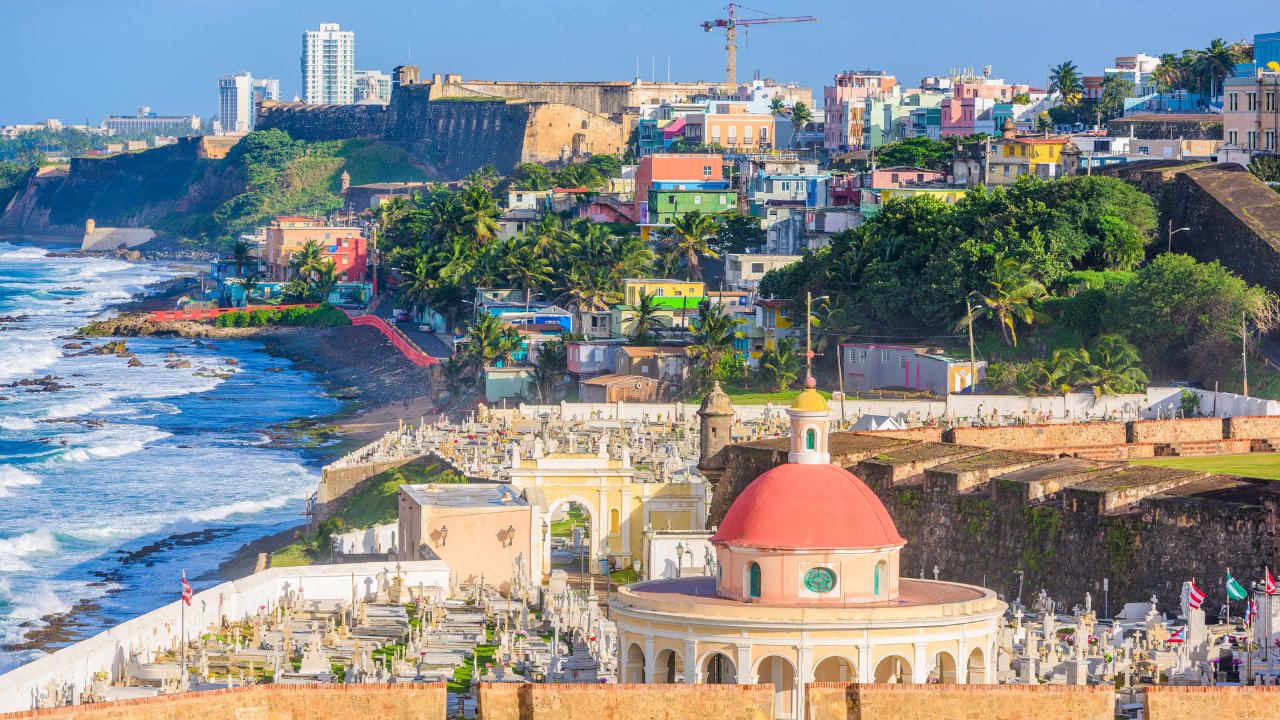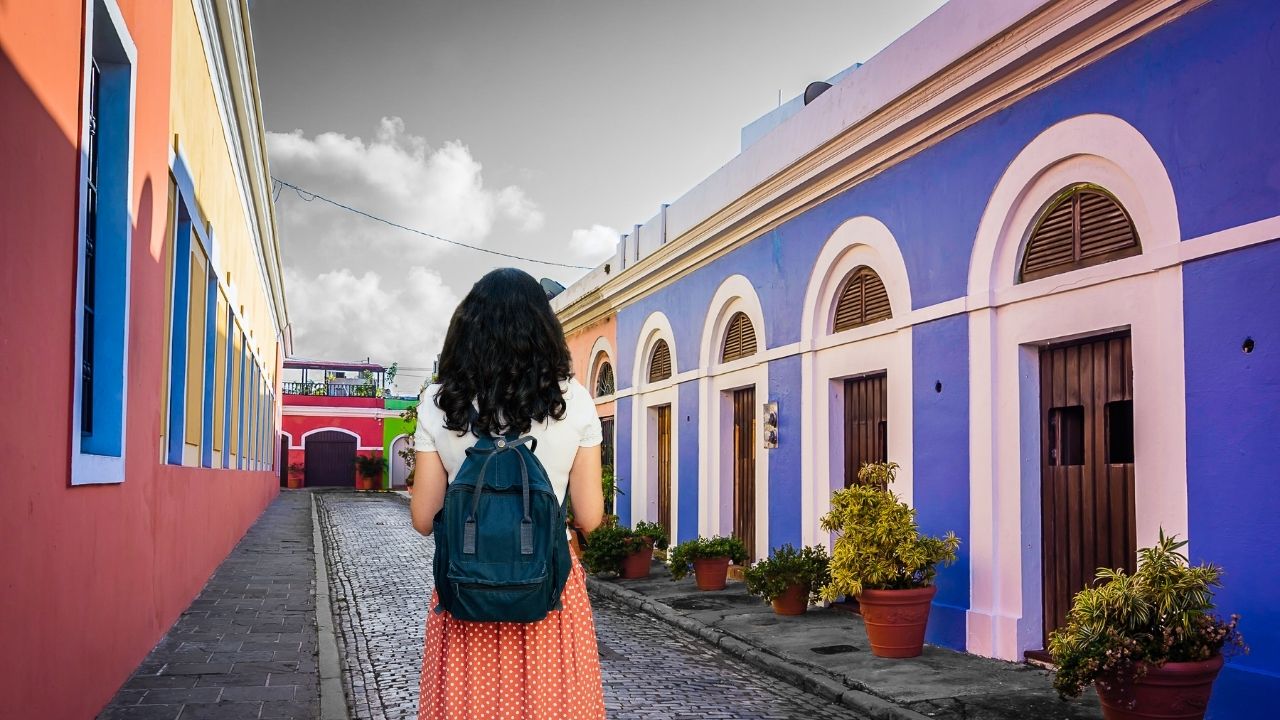Are you planning a trip to Puerto Rico but unsure of what to expect? Whether you’re a first-time visitor or a seasoned traveler, there are certain things you need to know before you go. In this post, we’ll cover 14 things to know before visiting Puerto Rico. We cover everything from visa rules to transportation, dress codes, and cultural norms, discovering delicious cuisine, exploring stunning beaches, and more. Keep reading to learn all about what to expect when traveling to Puerto Rico.
1. VISA rules for Visiting Puerto Rico (Americans Don’t Need A Passport for Puerto Rico)
Puerto Rico is a Commonwealth of the USA but has its own laws and customs that differ from those of the United States. US citizens do not need a passport or visa to enter Puerto Rico. The flights from the US are considered domestic. Visitors must still pay an 11.5% local tax on goods and services. In addition, they must pass through the US Department of Agriculture channel at the airport to ensure prohibited items are not brought into the US. Non-US citizens may need to apply for a 90-day visa before arriving in Puerto Rico. But those from countries that are part of the US Visa Waiver Program do not need a visa.
2. Guide to Transportation and Renting a Car
Public transportation in Puerto Rico is often unreliable, with bus routes and pick-up times that can be unpredictable. The Autoridad Metropolitana de Autobuses (AMA) serves the San Juan metropolitan area, but it has limited coverage.
To explore the central mountain range, northwest beaches, or southwestern desert, a rental car is necessary. Prices can vary depending on the season, but having a car allows for greater flexibility and the ability to make stops at scenic lookout points along Expressway 22 in the north or Route 66 in the northwest, perfect for taking photographs. Moreover, ride-sharing apps offer a more budget-friendly substitute for taxis, but some areas may have limited availability.
When renting a car, it’s important to research prices and book in advance. Driving in Puerto Rico can be challenging due to narrow roads and heavy traffic, so it’s important to be aware of local driving laws and customs, such as yielding to pedestrians and using turn signals.
3. Traffic is High

If you’re planning on renting a car during your trip to Puerto Rico, it’s essential to be aware that the island is known for having heavy traffic, especially in the metropolitan area. Rush hour traffic could turn a straightforward 20-minute drive into a 45-minute or even an hour-long journey. To avoid the frustration of sitting in traffic, it’s wise to give yourself ample time to get to your destination.
4. Dress Code and Cultural Norms in Puerto Rico
When visiting to Puerto Rico, there are certain things to know about the country’s customs and culture. Puerto Rico’s history as a former Spanish colony has left a significant impact, especially in terms of the prevalence of Catholicism. This influence is apparent in Puerto Rican traditions and celebrations. One aspect that reflects this is the country’s conservative dress codes. It’s common to see locals in Old San Juan dressed in full suits or long shirts, even in hot weather. This approach extends to other areas of Puerto Rican society, with flip-flops typically reserved for the beach or casual settings.
Moreover, several clubs in Puerto Rico have dress codes that mandate men to wear nice shoes, while women should avoid wearing sneakers. It’s essential to keep this in mind if you plan on going out at night and don’t want to be turned away at the door. Make sure to pack some dressy outfits for such occasions or visits to religious sites. Whether you’re exploring the historic streets of Old San Juan or soaking up the natural beauty of Puerto Rico’s beaches and mountains, knowing how to dress appropriately is crucial to fitting in and enjoying your time on the island.
5. Mastering Spanish Simplifies Puerto Rico Visit
Spanish is the most widely spoken language in Puerto Rico, although the official languages are Spanish and English. You can find people who speak English mostly within the tourist areas, while Spanish remains the dominant language elsewhere. When exploring Puerto Rico beyond the main tourist zones, it is recommended to brush up on Spanish. However, if you are not fluent in the Spanish language, you can use the google translate app to overcome the language barrier.
6. Discovering Puerto Rico’s Delicious Cuisine

Puerto Rican cuisine is a delicious blend of indigenous, African, and Spanish influences, creating a unique culinary experience that is a must-try for any food lover. With its wide variety of dishes, the cuisine of Puerto Rico is sure to satisfy even the most discerning palates.
One of the most iconic dishes of Puerto Rican cuisine is the mofongo. Other dishes that are staples of the Puerto Rican diet include asopao, chuletas, and alcapurrias. Seafood is also a major part of the Puerto Rican diet, thanks to the island’s abundant coastline. One of the most popular seafood dishes is bacalao. Other seafood dishes include Camarones al ajillo and ceviche.
Besides, no Puerto Rican meal is complete without a sweet treat. Popular desserts include tembleque, a coconut pudding with cinnamon and nutmeg, and arroz con dulce, a rice pudding commonly served during the holidays. And let’s not forget about the island’s signature cocktail, the piña colada, made with coconut cream, pineapple juice, and rum.
Whether you’re a fan of savory dishes or sweet treats, Puerto Rican cuisine has something for everyone. So, welcome to Puerto Rico and experience the full range of Puerto Rican cuisine.
7. Discovering the Beauty of Puerto Rico’s Stunning Beaches

Puerto Rico is a beach lover’s paradise, with over 270 miles of coastline and an abundance of stunning beaches to choose from. The island has beautiful beaches and clear waters, ideal for swimming, sunbathing, and water sports.
One of the most popular beaches in Puerto Rico is Flamenco Beach on the island of Culebra. It’s often ranked as one of the top beaches in the world, with white sand, calm waters, and stunning views of hills. Other popular beaches include Isla Verde Beach in San Juan, which is conveniently located close to hotels and restaurants. And Luquillo Beach, which is known for its palm trees and shallow waters.
For those looking for more secluded spots, Puerto Rico has plenty of hidden coves and beaches to explore. Vieques Island has two hidden beaches: Playa Caracas (accessed by foot or boat) with crystal-clear waters and soft white sand, and Playa Negra (on the west coast) with black sand and dramatic rock formations.
Whether you’re looking for a lively beach with plenty of activities or a secluded spot to relax and unwind, Puerto Rico has a beach that will suit your needs. The island’s natural beauty and stunning coastline make it a must-visit destination for any beach lover.
8. Puerto Rico is Not Just Beaches

Things to Know Before Visiting Puerto Rico include the fact that the island is not just famous for its stunning beaches but also has a diverse range of natural wonders to explore. For example, El Yunque National Forest is a must-visit destination that features lush rainforests, cascading waterfalls, and breathtaking mountain vistas. Or, if you’re feeling adventurous, you can take a trip to Vieques to witness the bioluminescent bay, where tiny organisms light up the water at night.
9. Be Aware of the Hurricane Season
When considering the Best Time to Visit Puerto Rico, it’s important to take into account the island’s weather patterns. While Puerto Rico generally enjoys good weather year-round, it’s not always perfect. The island is located in the hurricane belt, with the usual hurricane season spanning from June 1 to November 30. Although hurricanes can happen at any point during this time, August and September are usually the most active months.
To avoid any inconvenience, visitors should stay informed about weather reports and consider purchasing travel insurance to protect against any possible cancellations or unforeseen disruptions during this period.
10. Puerto Rico Cruise Port

For those who are seeking a cruise vacation with Puerto Rico as one of the destinations. San Juan offers a bustling port that serves numerous cruise lines. The Old San Juan Cruise Port is a popular point of embarkation and disembarkation for many visitors. This port offers a range of amenities for travelers, including a variety of shops, restaurants, and entertainment options.
It is a highly walkable area, making it easy for visitors to explore the city’s rich cultural heritage and attractions. The San Juan Walking Tour is an excellent way to experience the cobblestone streets, local shops, restaurants, and vibrant energy of the city.
Overall, Puerto Rico’s cruise port in San Juan offers an excellent starting point for those who want to explore the island’s many attractions. The walkability of Old San Juan, along with its historical charm and convenient location, make it a must-visit destination for any traveler.
11. Using the US Dollar in Puerto Rico: No Need for Currency Conversion
Puerto Rico widely accepts the US dollar. This means that visitors from the United States or any other country that uses the dollar can use their currency without the need for conversion. You don’t need to worry about exchanging currency or dealing with different exchange rates, which can save time and money. As long as you have cash or a credit card, you can easily pay for your purchases without any hassle. However, it’s still a good idea to check with your bank or credit card company regarding any fees or limitations on international transactions.
12. Pay Attention to Your Metrics
One of the essential Things to Know Before Visiting Puerto Rico is that the island employs both metric and imperial systems of measurement. This can be confusing for some visitors, as you may notice mile markers displayed in kilometers, while cars may use miles per hour for speed, and gas stations may sell fuel in liters instead of gallons.
To avoid any confusion, our recommendation is for you to have a converter ready during your visit. This will make it easier to navigate the island and understand the different measurements being used. You can download a conversion app on your phone or bring a physical converter with you.
13. Cell Phone Service Options for Tourists in Puerto Rico
Most major cell phone carriers in the United States, including AT&T, Verizon, T-Mobile, and Sprint, provide coverage in Puerto Rico. However, it’s important to check with your carrier before traveling to ensure Puerto Rico coverage and avoid extra fees. Some carriers may also have limited coverage in certain areas of the island. So it’s best to check the coverage map for your specific carrier.
While cell phone service is widely available in Puerto Rico, keep in mind that some remote areas of the island may have limited or no coverage. For exploring these areas, have a backup plan like paper maps or GPS to avoid getting lost.
14. Prepare Tipping in Puerto Rico
Tipping is customary in Puerto Rico for most service industries like restaurants, bars, hotels, taxis, and tour guides. The recommended gratuity is 15-20% of the total bill for good service, but it’s essential to check for automatic service charges to avoid tipping twice. For taxis, rounding up to the nearest dollar or adding 10-15% of the fare is customary. For tour guides, a 10-20% tip based on the total cost is recommended. Some hotels may include gratuities in their daily resort fees, but it’s still appropriate to tip housekeeping staff separately. Tipping is a sign of appreciation for good service and an important part of the hospitality industry in Puerto Rico.
Final Thoughts
So, there are many things to know before visiting Puerto Rico. Who are already make plan to go Puerto Rico, they can also read the article 25 Interesting Facts About Puerto Rico. This enchanting destination offers a variety of attractions for all types of travelers, including historical landmarks, cultural experiences, outdoor adventures, and beach relaxation. However, it’s important to be aware of some of the challenges of traveling to the island, including transportation limitations, weather risks, and safety concerns. With proper planning and precautions, however, Puerto Rico can be a rewarding and unforgettable travel experience.




